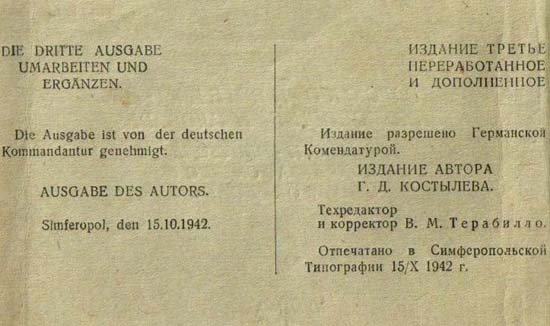 Third, revised and complemented edition, approved by the German High Command. Edition of the author, G. D. Kostylev. Technical editor and proofreader: V. M. Terabillo. Printed in the Simferopol Printing House, 15 October 1942
Third, revised and complemented edition, approved by the German High Command. Edition of the author, G. D. Kostylev. Technical editor and proofreader: V. M. Terabillo. Printed in the Simferopol Printing House, 15 October 1942Apart from the introduction, only one more page was found on the Russian net: the list of holidays in German, Russian and the German names in Cyrillic transcription. This latter, as well as the complete lack of Russian holidays shows, whose practical needs determined the content of the phrasebook.
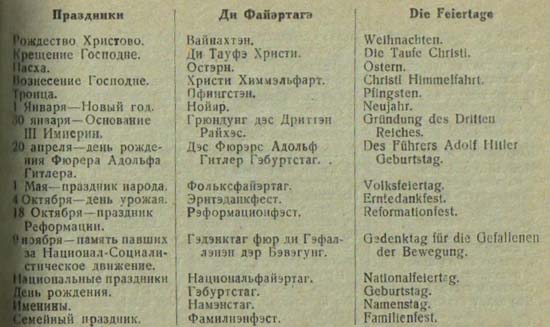
| The holidays Christmas Christ’s baptism Easter Ascension of Christ Pentecost [in the Russian: Trinity] January 1 – New Year January 30 – Foundation of the Third Reich April 20 – Birthday of the Führer, Adolf Hitler | May 1 – The People’s Feast October 4 – Harvest Festival October 18 – Feast of the Reformation November 9 – Day of the Fallen for the National Socialist Movement National holiday Birthday Name day Family feast |
When the dictionary appeared, they were already over the 1942 Easter celebrations on the Russian front. Christmas was soon to come.
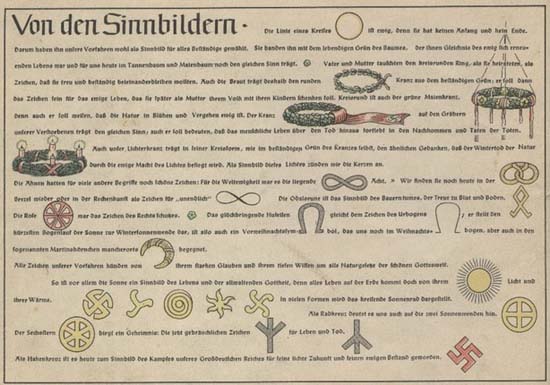 Figures of recommended “Christmas” (officially: Winter Solstice) tree ornaments and Hakenkreuzkranz (swastika-shaped Advent wreath) from the National Socialist Christmas brochure Vorweihnachten 1942
Figures of recommended “Christmas” (officially: Winter Solstice) tree ornaments and Hakenkreuzkranz (swastika-shaped Advent wreath) from the National Socialist Christmas brochure Vorweihnachten 1942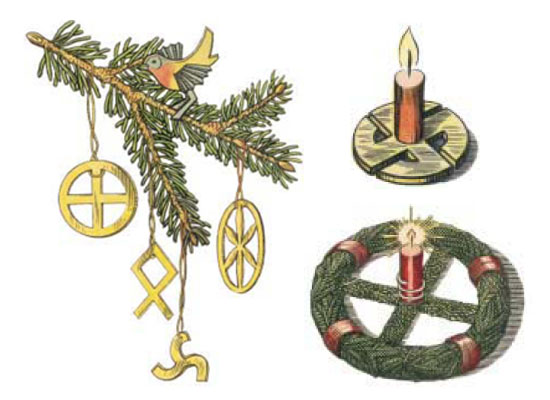
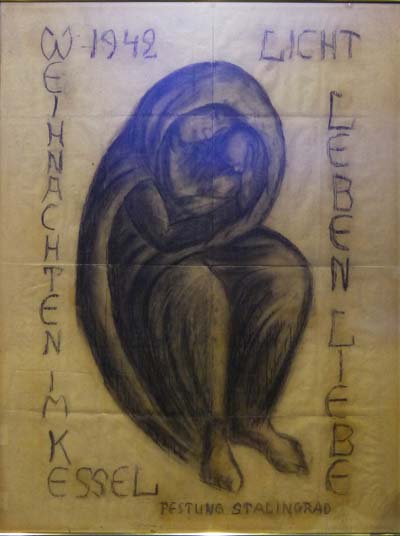 “Light, life, love. Christmas 1942 in the Cauldron of Festung Stalingrad.” The so-called “Stalingrad Mother of God”. Drawing by Lutheran pastor and military surgeon Kurt Reuber (died on 20 January 1944 in the prisoner of war camp of Yelabuga) on the back of a Russian map for the Christmas night of the 6th German Army in the blockaded Stalingrad Cauldron. The original is today in the Berlin Cathedral, its copy in the Volgograd (Stalingrad’s name since 1961) Cathedral.
“Light, life, love. Christmas 1942 in the Cauldron of Festung Stalingrad.” The so-called “Stalingrad Mother of God”. Drawing by Lutheran pastor and military surgeon Kurt Reuber (died on 20 January 1944 in the prisoner of war camp of Yelabuga) on the back of a Russian map for the Christmas night of the 6th German Army in the blockaded Stalingrad Cauldron. The original is today in the Berlin Cathedral, its copy in the Volgograd (Stalingrad’s name since 1961) Cathedral.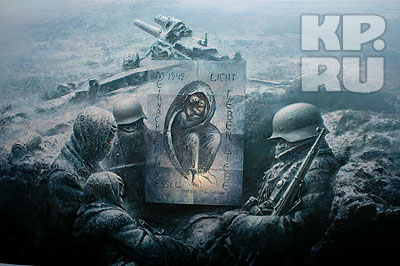 Christmas with the Stalingrad Mother of God. Work by the Volgograd painter Vladislav Koval for the 65th anniversary of the occupation of Stalingrad, 21 January 2008 (the letters are not part of the original painting)
Christmas with the Stalingrad Mother of God. Work by the Volgograd painter Vladislav Koval for the 65th anniversary of the occupation of Stalingrad, 21 January 2008 (the letters are not part of the original painting)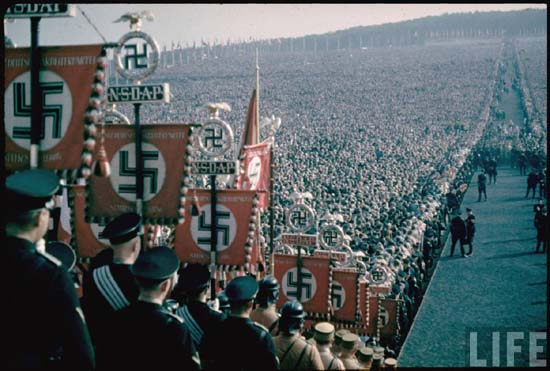
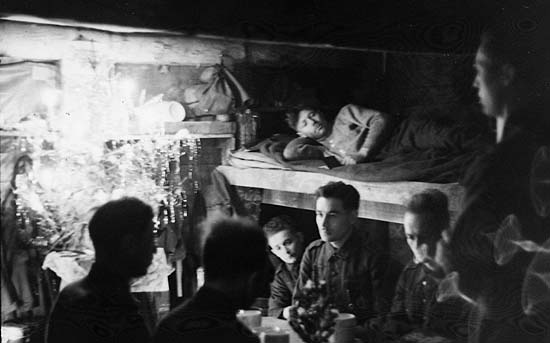

























































No hay comentarios:
Publicar un comentario